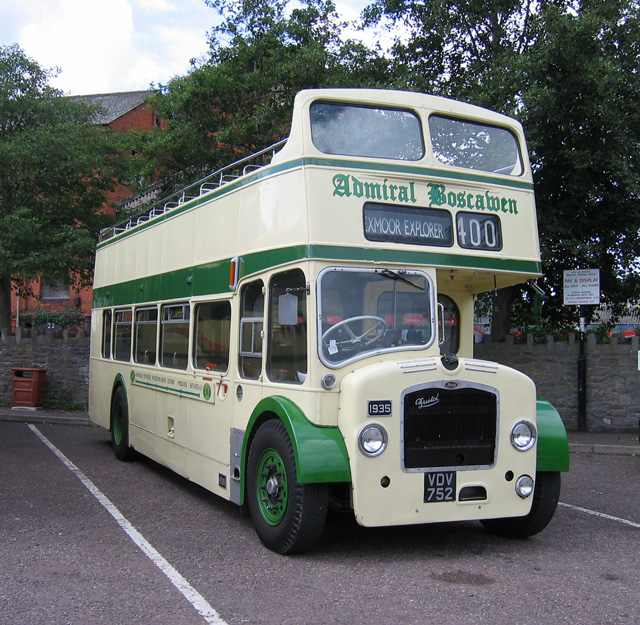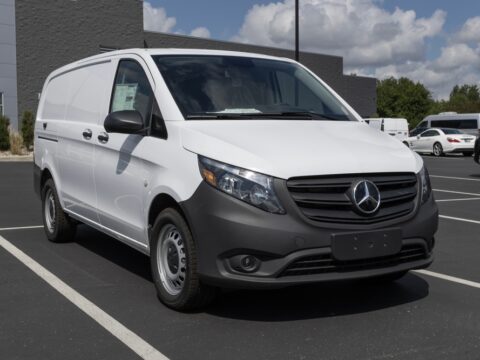Public transport has seen many changes over the years, and one noticeable shift is the retirement of iconic bus models that once dominated city streets. These classic buses, known for their unique designs and reliability, have been replaced by more modern vehicles. However, their legacy remains strong in the memories of commuters and transport enthusiasts alike. In this article, we’ll take a look back at 23 of these retired bus models that once played a vital role in public transport around the world.
Contents
AEC Routemaster

The AEC Routemaster is one of the most iconic double-decker buses in history, synonymous with London. Introduced in the 1950s, it featured an open rear platform, allowing passengers to hop on and off with ease. Its sturdy design, reliable operation, and timeless aesthetic made it a staple of the city’s transport network for decades before being retired in the early 2000s in favor of modern low-floor buses.
Leyland Titan

A mainstay in many UK cities, the Leyland Titan was introduced in the 1920s and evolved through various versions over several decades. It was favored for its capacity to carry large numbers of passengers and its rugged construction, making it suitable for busy urban routes. However, advancements in bus technology led to its retirement by the 1980s, as more efficient and accessible models emerged.
GM New Look “Fishbowl”

The GM New Look, also known as the “Fishbowl” for its distinctive curved windshield, was one of the most recognizable buses in North America. Introduced in 1959, it remained in service for over 30 years due to its durability and iconic design. Despite its longevity, it was eventually replaced by low-floor buses that provided easier access for passengers with mobility challenges.
Bristol Lodekka

The Bristol Lodekka, first introduced in 1949, was a revolutionary bus design due to its low-floor layout, which allowed it to navigate under low bridges. It became a key player in the British public transport system, particularly in cities with challenging routes. As accessibility standards changed, the Lodekka was retired to make way for buses with even lower floors and more modern features.
Mercedes-Benz O305

This bus model became a standard across Europe during the 1970s and 1980s, known for its reliability and straightforward design. It was particularly popular in Germany, where it served urban and suburban routes. Despite its success, the O305 was eventually retired in favor of more modern buses with better fuel efficiency and accessibility.
Leyland Atlantean

The Leyland Atlantean, introduced in 1958, was a pioneering model as one of the first rear-engine double-decker buses. This innovation allowed for greater passenger capacity and improved driver visibility. It became popular in the UK and several other countries, but was eventually phased out as newer bus models provided better fuel efficiency and ease of maintenance.
Ikarus 280

The Ikarus 280 was an articulated bus that became a workhorse of public transport in Eastern European cities during the 1970s and 1980s. Its articulated design allowed for greater passenger capacity, making it ideal for busy urban routes. Despite its utility, it was retired as newer, more efficient articulated buses were developed.
Bedford OB

The Bedford OB was a single-decker bus introduced before World War II and used extensively on rural routes in the UK. Known for its elegant design and compact size, it could navigate narrow country roads with ease. As public transport needs grew and larger buses became more common, the OB was phased out by the 1960s.
Neoplan N4009

A compact city bus introduced by Neoplan in the 1980s, the N4009 was known for its maneuverability and versatility in crowded urban areas. Its smaller size allowed it to navigate tight city streets, but it was eventually replaced by more modern buses with improved technology and accessibility features.
Volvo B58

The Volvo B58 was a popular bus chassis used throughout Scandinavia and other parts of Europe from the 1960s to the 1980s. Known for its durability and adaptability, it could be configured for a wide range of uses, from city buses to long-distance coaches. However, the B58 was retired as newer, more fuel-efficient models became available.
Scania-Vabis Capitol

Introduced in the 1950s, the Scania-Vabis Capitol was a bus commonly used in Sweden. It was known for its reliability and strong performance in cold climates, making it a favorite in Scandinavian countries. Despite its success, it was eventually replaced by more modern buses with enhanced comfort and efficiency.
Daimler Fleetline

The Daimler Fleetline was a rear-engine double-decker bus that gained popularity in the UK in the 1960s and 1970s. It was particularly favored for its capacity and ease of maintenance. However, its time came to an end in the 1990s as newer, more efficient bus models became the industry standard.
Fiat 682RN

This Italian bus model was introduced in the mid-20th century and became a common sight across cities in Italy. It was known for its simple design and reliability. Over time, the 682RN was replaced by more modern buses with greater capacity and efficiency, marking the end of its era.
Bristol VR

The Bristol VR was another double-decker that played a major role in UK public transport, especially during the 1970s and 1980s. Known for its robust design, it was widely used by regional bus companies. However, it was eventually retired as part of the transition to low-floor buses that better served modern accessibility standards.
Mack C-49

The Mack C-49 was a prominent bus in New York City during the mid-20th century. It was a heavy-duty vehicle designed to handle the bustling traffic of a metropolis. Despite its strong presence, it was phased out as newer, more comfortable and efficient buses were introduced in the 1960s.
Iveco TurboCity

Widely used in Italy throughout the 1980s and 1990s, the Iveco TurboCity was known for its practicality and efficiency. Its straightforward design made it easy to maintain, but as technology advanced and demand for greater comfort and environmental standards grew, the TurboCity was replaced by newer models.
Renault PR100

The Renault PR100 became a common sight in French cities in the late 20th century. It was praised for its spacious interior and practical design, making it a reliable workhorse in urban areas. However, it was eventually replaced by buses with better fuel efficiency and lower emissions.
MAN SL 200

The MAN SL 200 was a widely used city bus in both Germany and Australia from the 1970s through the 1990s. Its spacious design and durability made it a popular choice for high-traffic routes. With the arrival of more modern buses that offered better fuel economy and accessibility, the SL 200 was retired.
Dennis Dominator

The Dennis Dominator was a rear-engine double-decker bus introduced in the UK in the 1970s. Its innovative design allowed for more efficient use of space, and it was widely adopted in cities across Britain. Despite its success, it was retired as newer, more accessible buses became the norm.
Setra S215

The Setra S215 was a popular long-distance coach in Europe, known for its comfort and durability. It was often used for intercity travel, providing a reliable and comfortable ride. However, it was eventually replaced by more modern coaches with better fuel efficiency and updated amenities.
Leyland Leopard

The Leyland Leopard was a single-decker bus widely used in the UK for both urban and long-distance routes. Introduced in the 1950s, it remained in service for several decades due to its reliability. It was eventually retired as newer, more fuel-efficient buses took over.
Ikarus 260

The Ikarus 260 was a durable bus model popular in Eastern Europe during the 1970s and 1980s. Known for its robust construction and simple design, it was well-suited to the needs of city transit in the region. However, as newer models with better performance emerged, the Ikarus 260 was retired.
Bedford VAL

The Bedford VAL stood out for its unusual twin front-axle design, which allowed for greater stability on long-distance routes. It was primarily used in the UK during the 1960s and 1970s. Despite its innovative design, it was eventually replaced by more conventional and efficient bus models as technology advanced.
This article originally appeared in MyCarMakesNoise.
More from MyCarMakesNoise
18 RV Innovations That Transformed Road Travel Comfort

RV travel has come a long way in terms of comfort and convenience, thanks to a range of innovative features that make life on the road easier. From advanced power systems to smart technology, these innovations enhance the overall experience, whether you’re camping off-grid or driving cross-country. Read More
15 Vehicle Tech Concepts That Promise Much but Deliver Little

Not every idea that sounds innovative turns out to be practical. In the automotive world, many technologies and features promise convenience, safety, or efficiency but fall short when put to the test. Read More
14 RV Models That Defined the Golden Age of Road Trips

The golden age of road trips brought with it a wave of iconic RVs that made travel more comfortable, adventurous, and accessible. These RV models, each with their unique features, helped define a generation of cross-country explorers, offering both style and practicality. Read More














